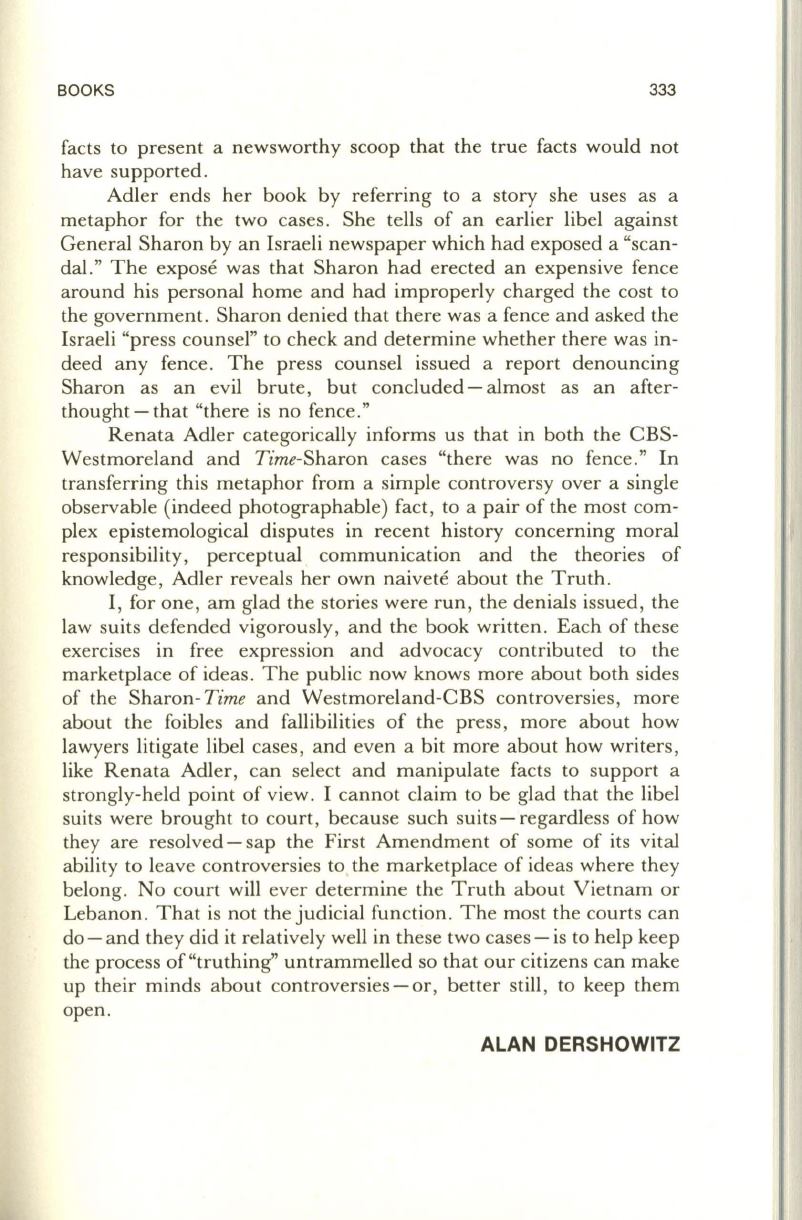
BOOKS
333
facts to present a newsworthy scoop that the true facts would not
have supported.
Adler ends her book by referring to a story she uses as a
metaphor for the two cases. She tells of an earlier libel against
General Sharon by an Israeli newspaper which had exposed a "scan–
dal." The expose was that Sharon had erected an expensive fence
around his personal home and had improperly charged the cost to
the government. Sharon denied that there was a fence and asked the
Israeli "press counsel" to check and determine whether there was in–
deed any fence . The press counsel issued a report denouncing
Sharon as an evil brute, but concluded - almost as an after–
thought - that "there is no fence."
Renata Adler categorically informs us that in both the CBS–
Westmoreland and
Time-Sharon
cases "there was no fence ."
In
transferring this metaphor from a simple controversy over a single
observable (indeed photographable) fact, to a pair of the most com–
plex epistemological disputes in recent history concerning moral
responsibility, perceptual communication and the theories of
knowledge, Adler reveals her own naivete about the Truth.
I, for one, am glad the stories were run, the denials issued, the
law suits defended vigorously, and the book written. Each of these
exercises in free expression and advocacy contributed to the
marketplace of ideas. The public now knows more about both sides
of the Sharon-
Time
and Westmoreland-CBS controversies, more
about the foibles and fallibilities of the press, more about how
lawyers litigate libel cases, and even a bit more about how writers,
like Renata Adler, can select and manipulate facts to support a
strongly-held point of view. I cannot claim to be glad that the libel
suits were brought to court, because such suits - regardless of how
they are resolved - sap the First Amendment of some of its vital
ability to leave controversies to the marketplace of ideas where they
belong. No court will ever determine the Truth about Vietnam or
Lebanon. That is not the judicial function. The mos t the courts can
do - and they did it relatively well in these two cases - is to help keep
the process of "truthing" untrammelled so that our citizens can make
up their minds about controversies-or, better still, to keep them
open.
ALAN DERSHOWITZ


